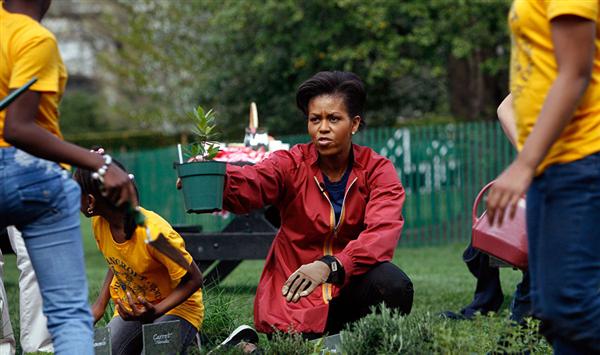There have been plenty of un-veiling ceremonies for new statues at the U.S. Capitol(国会大厦). But when Michelle Obama peeled the cover off the bronze bust of abolitionist(废奴主义者) Sojourner Truth last week, the moment was heavy with symbolism. Truth is the first African-American woman to be honored with a statue in the Capitol. In a way no first lady before her ever could have done, Obama connected the dots between herself and the black feminist pioneer. "Now many young boys and girls like my own daughters will come to Emancipation Hall and see the face of a woman who looks like them," she told the gathering. "I hope that Sojourner Truth would be proud to see me, a descendant of slaves, serving as the first lady of the United States of America."
It was just the kind of scene I'd been hoping for when Barack Obama won the presidency last fall. I knew that Michelle Obama was already changing the way we see ourselves as African-American women. But I also hoped she would begin to knock down ugly stereotypes and educate people about American black culture. What's remarkable now—just over that much-hyped 100-day mark—is how quickly and decisively Michelle has taken on the issues that matter most to us.
From the start, Michelle never shied(畏缩) away from being an African-American role model. "I think it's clear that Michelle Obama is very comfortable in her own skin,'' says Debbie Walsh, director of the Center of American Women in Politics at Rutgers University(拉特格斯大学). "She's not sending a message that I'm the first lady who just happens to be African-American. She's saying I'm an African-American first lady. There is a difference, and she's not afraid to show that.''


